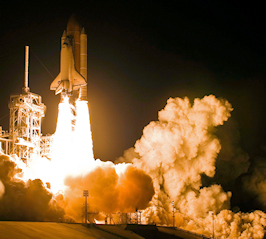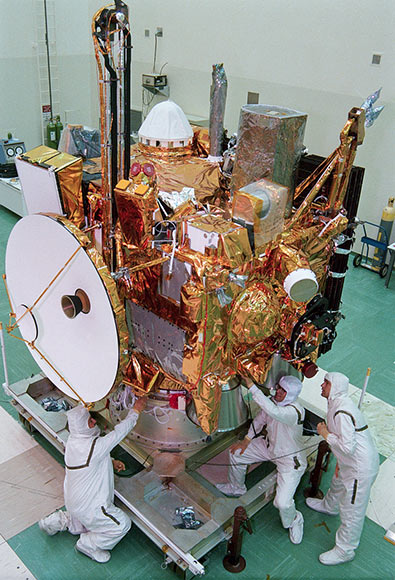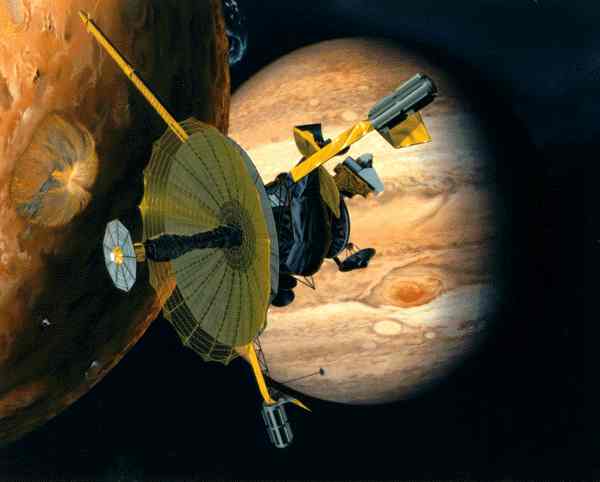No 2. The Mars Observer
If there are Martians, they were probably laughing on Aug. 21, 1993. That’s the day the Mars Observer went missing, vanishing into thin air (or rather, no air). The spacecraft had launched a year earlier, but contact was lost days before it was supposed to enter the Red Planet’s orbit. At NASA’s Jet Propulsion Laboratory, some comforted themselves by putting a milk carton with a picture of the spacecraft and the words “Have You Seen Me?” on the wall.
No 1. Galileo Spacecraft
NASA had nothing but problems with Galileo. First launched in 1989, the spacecraft arrived at Jupiter six years later. Its antenna — made of gold-plated mesh stretched over ribs that folded like an umbrella — failed to deploy on its first try in 1991. Engineers decided to turn it 165 degrees away from the sun in order to drop the temperature in hopes of shrinking some of the antenna’s ribs, which appeared to be stuck. When that didn’t work, they tried switching the motor on and off a reported 13,000 times. Still nothing. After trying a number of fixes, NASA decided to use Galileo’s low-gain antenna to transmit information back to Earth. Despite all its complications, the spacecraft orbited Jupiter 34 times during its 14 years (it was destroyed in 1995), found evidence of subsurface salt water on three of its moons and was the first to measure the planet’s atmosphere.
The Galileo spacecraft, launched in 1989 aboard the space shuttle Atlantis, studied Jupiter and its moons, finding warm ice, water and icebergs on the moon Europa before ending its mission in 2003.




